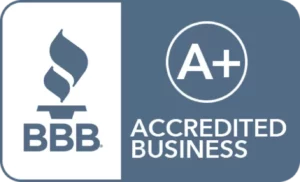Year-End Planning – Contribution Deadline
As we move closer to the new year, IRA holders have begun their IRA year-end retirement planning for 2019. It doesn’t matter what type of IRA you own, it’s very important to create a plan to meet your annual contributions. IRA contributions are advantageous for two important reasons:
- You receive a deduction if you have a pre-tax IRA, like the Traditional or Self-Directed IRA. As a result, this will lower your taxable income.
- The money you contribute into your IRA will grow tax-free until you take a qualified distribution. This is tax-deferral, also known as compounded return, and allows your money to grow faster than if you pay tax on income gains.
Traditional IRA & Roth IRA
The Traditional and Roth IRAs are two of the most popular individual retirement accounts. If you are worried that making a contribution will cut into your Holiday expenses, don’t. Participants of the Roth and Traditional IRA can wait until April 15 of next year to make a contribution. The contribution limit for both retirement accounts are $6,000 (under age 50) and $7,000 (age 50 and over) for 2019. The contribution limit for both the Traditional and Roth IRA is not expected to increase in 2020.
SEP IRA
The Simplified Employee Pension (SEP) IRA is a retirement plan for your business. As a result, you need to have a business to adopt the SEP IRA. The contribution is due by April 15 of 2020, or if you are afforded an extension, Oct 15 of 2020. The 2020 contribution limit for the SEP IRA will likely be increased to $57,000, up $1,000 from 2019.
Simple IRA
The Savings Incentive Match Plans for Employees (SIMPLE) IRA is an employer-sponsored retirement plan. Contributions can be made as an employee and employer. As an employee, the contribution deadline for the SIMPLE IRA is on December 31. For the employer, the SIMPLE IRA is due April 12 of 2020. If you’re an employee, it’s very important not to make mistake your contribution date with the employer deadline, as you will miss out on contributing for the year.
Earned Income
You can open your retirement account at any local bank, such as Wells Fargo or Bank of America, if you only plan to make traditional investments. If you want to make alternative investments, as well, you will need to establish your IRA at a special IRA Custodian, such as IRA Financial Trust. In order to open any type of individual retirement account, you will need to have earned income. In other words, you cannot only generate passive income if you wish to establish an IRA.
Let’s quickly review the differences between the two types of income:
Earned Income: Money you generate from paid work, such as wages, salary and tips.
Passive Income: Any income generated from an activity you are not actively involved in, such as rental income and capital gains.
Tax Deductions on Contributions
Most Traditional IRAs are tax-deductible because they are funded with pre-tax dollars. However, a Roth IRA, which is funded with after-tax dollars, are not tax-deductible. There are two factors when determining your tax deduction for a pre-tax IRA.
- Whether you have access to an employer-sponsored work plan, such as a 401(k)
- Your modified adjusted gross income (MAGI)
Access to a Work Plan
If you are an individual who has access to a work-sponsored retirement plan, such as the 401(k), but you also have a Traditional IRA, the IRA deduction depends on the amount of gross income you earned during the year, also known as the modified adjusted gross income.
Modified Adjusted Gross Income
Single filers who have a modified AGI of $64,000 can take a full deduction up to the amount of his or her contribution limit with a tradition account. The deduction decreases once you earn more than $64,000.
More than $64,000 but less than $74,000: partial deduction.
$74,000 or more: no deduction.
If you are married and filing jointly, you can take a full deduction if your modified AGI is no greater than $103,000.
More than $103,000 but less than $123,000: partial deduction.
$123,000 or more: no deduction.
If you are married, but filing separately, you must have a modified AGI of less than $10,000 to take a partial deduction. If you earn $10,000 or more, you will not receive a tax deduction.











